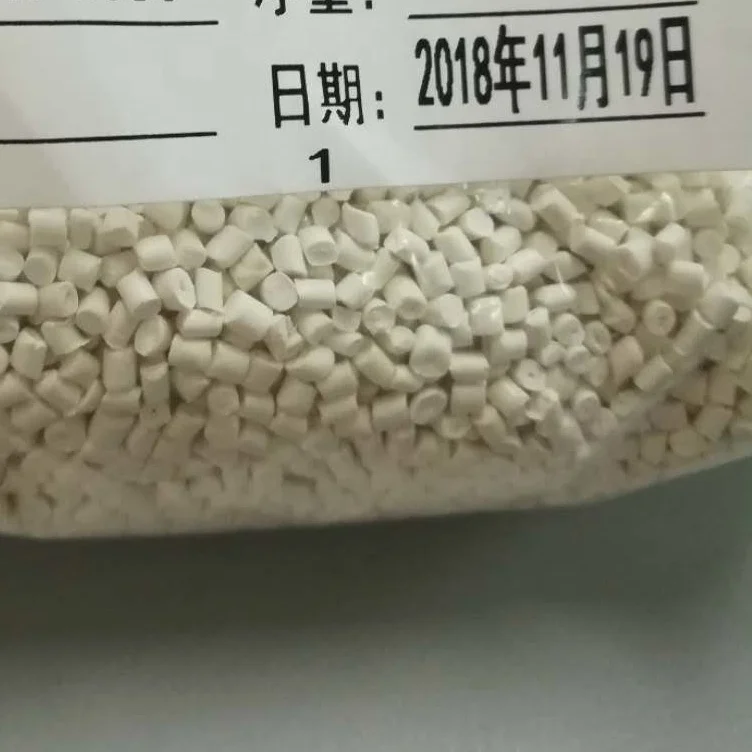
- +8615880211820
- [email protected]
- นิคมอุตสาหกรรมตองอัน เซียะเหมิน
มาสเตอร์แบทช์สีน้ำเงินเป็นสารให้สีเข้มข้นที่ใช้ในอุตสาหกรรมพลาสติกเพื่อสร้างเฉดสีน้ำเงินสดใสสำหรับผลิตภัณฑ์หลากหลายประเภท ผลิตจากส่วนผสมของเม็ดสี สารเติมแต่ง และสารพาหะโพลีเมอร์ ช่วยให้การกระจายสีสม่ำเสมอและสามารถปรับแต่งได้ตามความต้องการในการผลิต การใช้งานทั่วไป ได้แก่ บรรจุภัณฑ์ ชิ้นส่วนยานยนต์ วัสดุก่อสร้าง และสินค้าอุปโภคบริโภค เม็ดสีหลัก เช่น พทาโลไซยานีนและอัลตรามารีนบลู มักถูกเลือกใช้เนื่องจากความทนทานและความสว่าง
ประโยชน์ของมาสเตอร์แบทช์สีน้ำเงิน ได้แก่ ความสม่ำเสมอของสี ความคุ้มค่า และตัวเลือกที่เป็นมิตรต่อสิ่งแวดล้อมที่สอดคล้องกับมาตรฐานกฎระเบียบ การเลือกซัพพลายเออร์ สิ่งสำคัญคือต้องพิจารณาการประกันคุณภาพ การรับรองมาตรฐานอุตสาหกรรม และการสนับสนุนลูกค้า เมื่อความกังวลด้านสิ่งแวดล้อมเพิ่มมากขึ้น นวัตกรรมที่ยั่งยืน เช่น ตัวเลือกที่สามารถย่อยสลายได้ทางชีวภาพและรีไซเคิลได้ กำลังกำหนดอนาคตของมาสเตอร์แบทช์สีน้ำเงิน
มาสเตอร์แบทช์สีน้ำเงินคือส่วนผสมเข้มข้นของเม็ดสีและสารเติมแต่งที่บรรจุอยู่ในเรซินตัวพา ใช้สำหรับแต่งสีพลาสติกระหว่างการผลิต มาสเตอร์แบทช์สีน้ำเงินนี้มอบวิธีการที่แม่นยำและสม่ำเสมอในการเติมเฉดสีน้ำเงินสดใสให้กับผลิตภัณฑ์พลาสติกในอุตสาหกรรมต่างๆ ตั้งแต่บรรจุภัณฑ์ไปจนถึงชิ้นส่วนยานยนต์
ในการผลิตมาสเตอร์แบทช์สีน้ำเงินคุณภาพสูง ผู้ผลิตจะผสมเม็ดสีเข้ากับสารพาหะโพลิเมอร์และสารเติมแต่ง เม็ดสีที่นิยมใช้กัน ได้แก่ พทาโลไซยานีนบลูและอุลตรามารีนบลู ซึ่งให้สีที่เข้มข้นและทนต่อรังสี UV เรซินตัวพา ซึ่งโดยทั่วไปจะคล้ายกับโพลิเมอร์พื้นฐานของผลิตภัณฑ์ขั้นสุดท้าย ช่วยให้กระจายตัวได้ง่ายและเข้ากันได้ดี
กระบวนการผลิตเริ่มต้นด้วยการผสมเม็ดสี สารเติมแต่ง และเรซินตัวพา จากนั้นส่วนผสมนี้จะถูกให้ความร้อน อัดรีด และทำให้เย็นลง เพื่อให้ได้เม็ดพลาสติกที่สามารถเติมลงในพลาสติกได้อย่างง่ายดายในระหว่างการขึ้นรูปหรือการอัดรีด
มาสเตอร์แบทช์สีน้ำเงินถูกนำมาใช้อย่างแพร่หลายในอุตสาหกรรมบรรจุภัณฑ์ ให้สีสันที่สวยงาม ช่วยเพิ่มภาพลักษณ์ของแบรนด์และความน่าดึงดูดใจของผลิตภัณฑ์ มักพบในภาชนะบรรจุอาหารและเครื่องดื่ม ช่วยให้มั่นใจได้ว่าบรรจุภัณฑ์จะดูสวยงามสม่ำเสมอ
ในอุตสาหกรรมยานยนต์ มาสเตอร์แบทช์สีน้ำเงินช่วยเพิ่มสีสันให้กับชิ้นส่วนพลาสติกทั้งภายในและภายนอก คุณสมบัติป้องกันรังสียูวีทำให้เหมาะอย่างยิ่งสำหรับการใช้งานกลางแจ้ง ทนทานต่อแสงแดด ส่วนในงานก่อสร้าง มาสเตอร์แบทช์สีน้ำเงินถูกนำมาใช้ในท่อ ข้อต่อ และแผงต่างๆ เพื่อสร้างรูปลักษณ์ที่โดดเด่นและคงทน
ตั้งแต่ของใช้ในครัวเรือนไปจนถึงอุปกรณ์อิเล็กทรอนิกส์ มาสเตอร์แบตช์สีน้ำเงินถูกนำไปใช้ในผลิตภัณฑ์อุปโภคบริโภคหลากหลายชนิด ด้วยความอเนกประสงค์ของมาสเตอร์แบตช์สีน้ำเงินนี้ทำให้ผู้ผลิตสามารถผลิตเฉดสีน้ำเงินตามความต้องการได้ ตอบโจทย์ทั้งด้านความสวยงามและการใช้งาน
มาสเตอร์แบทช์สีน้ำเงินช่วยให้สีกระจายตัวสม่ำเสมอ มอบรูปลักษณ์ที่สม่ำเสมอตลอดการผลิตจำนวนมาก ช่วยลดโอกาสที่สีจะแตกต่างกัน ทำให้เป็นตัวเลือกที่แบรนด์ต่างๆ เลือกใช้เมื่อต้องการความสม่ำเสมอของสี
การใช้มาสเตอร์แบทช์แทนพลาสติกที่ผ่านกระบวนการย้อมสีแล้ว ช่วยให้ผู้ผลิตสามารถลดต้นทุนได้ เม็ดมาสเตอร์แบทช์จะถูกเติมลงในขั้นตอนเริ่มต้นของกระบวนการผลิต ช่วยประหยัดเวลาและแรงงาน แต่ยังคงให้สีคุณภาพสูง
ข้อได้เปรียบสำคัญประการหนึ่งของมาสเตอร์แบตช์สีน้ำเงินคือความสามารถในการสร้างเฉดสีเฉพาะตามความต้องการของแบรนด์ ไม่ว่าจะเป็นสีน้ำเงินโคบอลต์เข้มหรือสีฟ้าพาสเทลอ่อน ก็สามารถปรับเปลี่ยนสูตรมาสเตอร์แบตช์ให้ตรงกับความต้องการได้
สีฟ้าพทาโลไซยานีนเป็นตัวเลือกยอดนิยมเนื่องจากความสว่างและความคงตัวของสี เหมาะสำหรับการใช้งานที่ต้องการสีสันสดใสและติดทนนาน นอกจากนี้ยังมีความคงทนต่อแสงที่ดีเยี่ยม ทนทานต่อการซีดจาง
สีน้ำเงินอุลตรามารีนโดดเด่นด้วยโทนสีที่สดใสเป็นเอกลักษณ์ นิยมใช้ในงานที่ต้องการโทนสีฟ้าที่อุ่นขึ้นเล็กน้อย นอกจากนี้ยังปลอดสารพิษและเป็นมิตรต่อสิ่งแวดล้อม เหมาะสำหรับการใช้งานกับอาหาร
เนื่องจากความยั่งยืนกลายเป็นเรื่องสำคัญ สูตรมาสเตอร์แบทช์สีน้ำเงินจึงกำลังปรับตัว ปัจจุบันซัพพลายเออร์หลายรายนำเสนอผลิตภัณฑ์ที่เป็นมิตรต่อสิ่งแวดล้อม ปลอดสารพิษ และเป็นไปตามข้อกำหนดด้านความปลอดภัยในการใช้บรรจุภัณฑ์อาหารและของเล่นเด็ก การเลือกใช้มาสเตอร์แบทช์สีน้ำเงินที่คำนึงถึงสิ่งแวดล้อมไม่เพียงแต่เป็นไปตามมาตรฐานด้านกฎระเบียบเท่านั้น แต่ยังสนับสนุนการผลิตอย่างมีความรับผิดชอบอีกด้วย
มองหาซัพพลายเออร์ที่ควบคุมคุณภาพอย่างเข้มงวดและใช้เม็ดสีและสารเติมแต่งคุณภาพสูง ซัพพลายเออร์ที่เชื่อถือได้ควรให้ความสม่ำเสมอระหว่างการผลิต เพื่อให้มั่นใจว่าผลิตภัณฑ์ของคุณยังคงคุณภาพที่มองเห็นได้
สำหรับอุตสาหกรรมต่างๆ เช่น อาหารและการดูแลสุขภาพ โปรดตรวจสอบให้แน่ใจว่าซัพพลายเออร์ปฏิบัติตามมาตรฐานอุตสาหกรรมและมีใบรับรองที่เกี่ยวข้อง ตรวจสอบการปฏิบัติตามกฎระเบียบทั้งในระดับท้องถิ่นและระดับนานาชาติเกี่ยวกับสีและสารเติมแต่ง
ซัพพลายเออร์ที่มีการสนับสนุนลูกค้าที่ยอดเยี่ยมสามารถให้ความช่วยเหลือในการเลือกมาสเตอร์แบตช์ที่เหมาะสมกับความต้องการของคุณ รวมถึงการสนับสนุนด้านเทคนิคเพื่อให้แน่ใจว่าจะได้รับผลลัพธ์ที่ดีที่สุดในการผลิต
ด้วยความตระหนักด้านสิ่งแวดล้อมที่เพิ่มมากขึ้น อุตสาหกรรมจึงกำลังสำรวจทางเลือกที่ยั่งยืน ซึ่งรวมถึงมาสเตอร์แบทช์ที่ย่อยสลายได้ทางชีวภาพและมาสเตอร์แบทช์ที่ช่วยเพิ่มความสามารถในการรีไซเคิล อนาคตของมาสเตอร์แบทช์สีน้ำเงินมีแนวโน้มที่จะมีทางเลือกที่เป็นมิตรต่อสิ่งแวดล้อมมากขึ้น เนื่องจากผู้ผลิตให้ความสำคัญกับการลดผลกระทบต่อสิ่งแวดล้อมควบคู่ไปกับการรักษาคุณภาพและความทนทานของสี
มาสเตอร์แบทช์สีน้ำเงินมีบทบาทสำคัญในการแต่งสีและเพิ่มประสิทธิภาพให้กับผลิตภัณฑ์พลาสติกในทุกอุตสาหกรรม ตั้งแต่การกระจายตัวของสีที่สม่ำเสมอ ไปจนถึงตัวเลือกการปรับแต่ง และความสามารถในการปรับตัวตามสภาพแวดล้อม มาสเตอร์แบทช์สีน้ำเงินยังคงเป็นองค์ประกอบที่มีคุณค่าในการผลิตพลาสติกสมัยใหม่ ด้วยการทำความเข้าใจถึงประโยชน์ การใช้งาน และการเลือกซัพพลายเออร์ที่เหมาะสม ผู้ผลิตสามารถใช้ประโยชน์จากมาสเตอร์แบทช์สีน้ำเงินเพื่อผลิตผลิตภัณฑ์คุณภาพสูง สีสันสดใส ตรงตามมาตรฐานอุตสาหกรรมและความคาดหวังของลูกค้า
บริษัทของเรามีประสบการณ์มากกว่า 20 ปีในอุตสาหกรรมมาสเตอร์แบทช์พลาสติก เราเชี่ยวชาญในการวิจัยและผลิตมาสเตอร์แบทช์สี มาสเตอร์แบทช์ที่ใช้งานได้ พลาสติกเสริมใยแก้ว และวัตถุดิบพลาสติกที่ทนต่อการเผาไหม้ทุกชนิด ตั้งอยู่ในสวนอุตสาหกรรมถงอันของเมืองเซียะเหมินในประเทศจีน
โดยสรุป เราเป็นมืออาชีพในการผลิตมาสเตอร์แบทช์พลาสติกทุกชนิด รวมถึงมาสเตอร์แบทช์เสริม, มาสเตอร์แบทช์ที่ใช้งานได้, มาสเตอร์แบทช์สารหน่วงไฟ PE, มาสเตอร์แบทช์สารหน่วงไฟ ABS, มาสเตอร์แบทช์ป้องกันออกซิเจน, มาสเตอร์แบทช์ป้องกันรังสียูวี, มาสเตอร์แบทช์ป้องกันแบคทีเรีย, มาสเตอร์แบทช์ต่อต้านบล็อก และมาสเตอร์แบทช์แบบเติมแต่งอื่นๆ
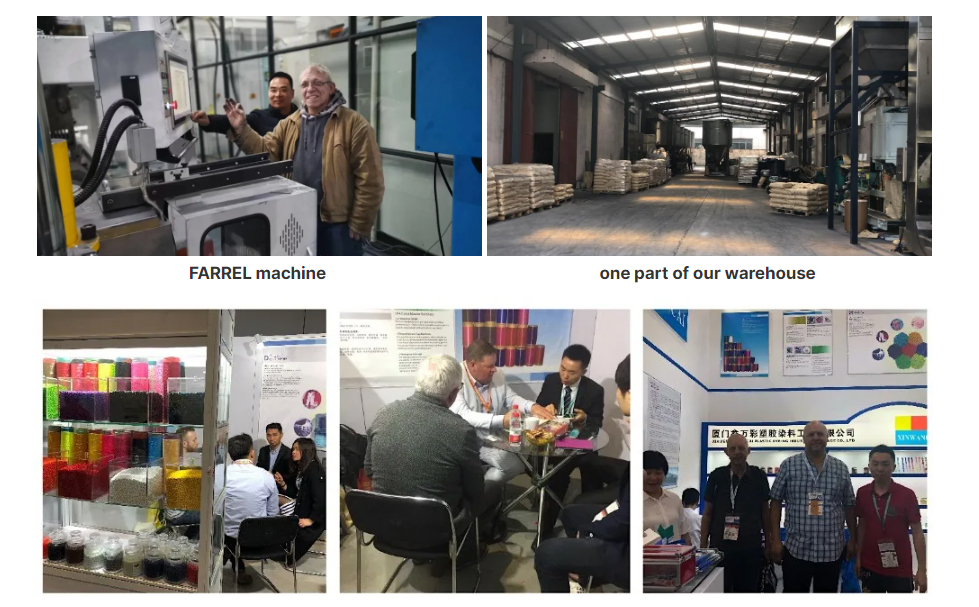
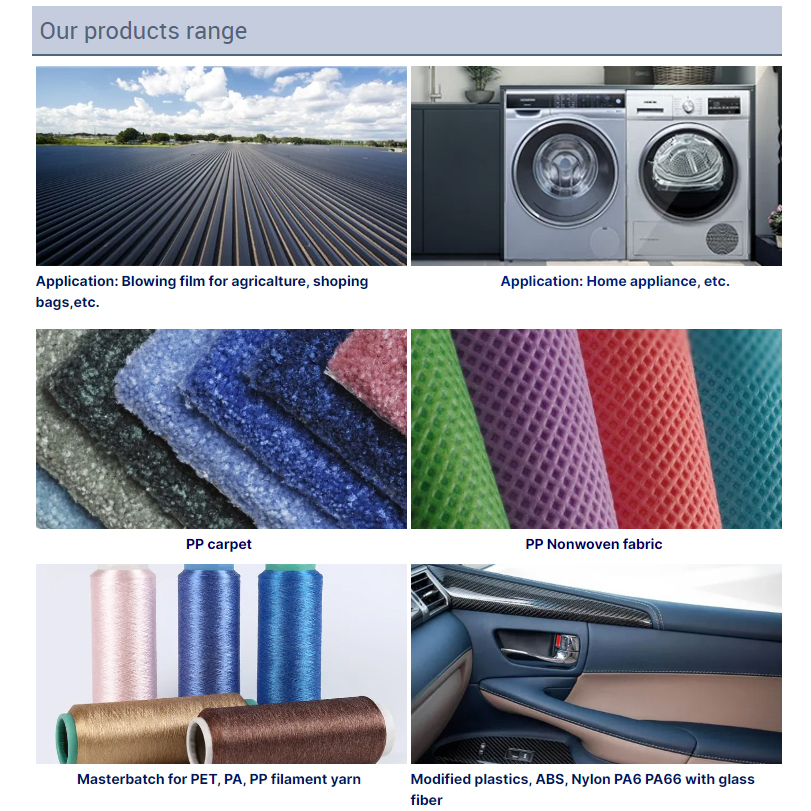
มาสเตอร์แบทช์ของเราพบการใช้งานที่หลากหลายในอุตสาหกรรมที่หลากหลาย ไม่ว่าจะเป็นในพลาสติก สิ่งทอ หรือกระบวนการผลิตต่างๆ มาสเตอร์แบทช์ของเรามีบทบาทสำคัญในการเพิ่มคุณภาพและประสิทธิภาพของผลิตภัณฑ์ ด้วยสูตรที่ปรับแต่งได้ พวกมันจึงมีความสม่ำเสมอของสี ป้องกันรังสียูวี ต้านทานเปลวไฟ และอื่นๆ อีกมากมาย ทำให้กลายเป็นโซลูชั่นที่เหมาะกับการใช้งานนับไม่ถ้วน ตั้งแต่ชิ้นส่วนยานยนต์ไปจนถึงวัสดุบรรจุภัณฑ์ มาสเตอร์แบทช์ของเราเป็นตัวเลือกที่เชื่อถือได้สำหรับการบรรลุผลลัพธ์ที่เหนือกว่าในอุตสาหกรรมที่หลากหลาย
มาสเตอร์แบทช์แบบกำหนดเองของเราได้รับการออกแบบเพื่อให้ตรงกับโพลีเมอร์เฉพาะ เพื่อให้มั่นใจถึงประสิทธิภาพสูงสุดเมื่อรวมเข้ากับวัสดุที่คุณเลือก เรามีความสามารถในการผลิตมาสเตอร์แบทช์ที่เหมาะกับโพลีเมอร์หลากหลายชนิดที่กล่าวถึงด้านล่าง และอื่นๆ อีกมากมาย หากคุณกำลังทำงานกับเนื้อหาที่ไม่ได้ระบุไว้ที่นี่ โปรดอย่าลังเลที่จะติดต่อทีมเทคนิคที่มีความรู้ของเราเพื่อสำรวจความเป็นไปได้ในการตอบสนองความต้องการเฉพาะของคุณ
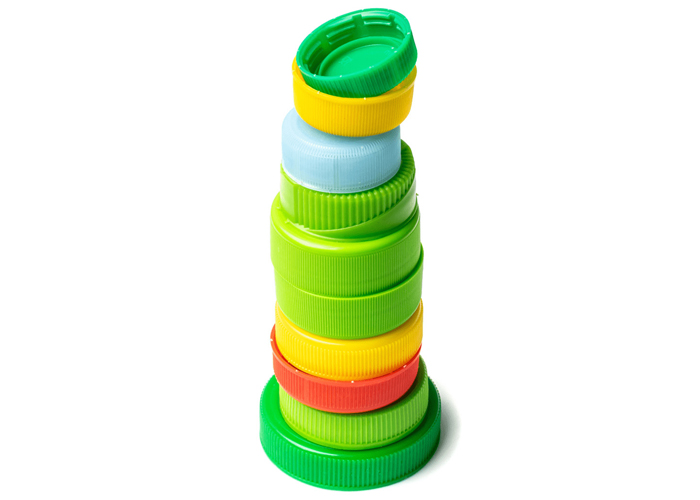
โพลีเอทิลีนความหนาแน่นต่ำ - ค่อนข้างโปร่งแสงมากกว่า HDPE และมีความยืดหยุ่นมากกว่ามาก โดยส่วนใหญ่ใช้ในบรรจุภัณฑ์ที่มีความยืดหยุ่น ถุงสิริ ท่อที่ยืดหยุ่นได้ การใช้ฟิล์ม และการใช้งานที่คล้ายกัน เช่นเดียวกับ HDPE มีลักษณะโปร่งใสจำกัด มีความทนทานต่อสารเคมีต่อแอลกอฮอล์ กรด และด่างได้ดีเยี่ยม แต่มีความต้านทานต่อตัวทำละลายไฮโดรคาร์บอนและน้ำมันแร่จำกัด การได้รับรังสี UV เป็นเวลานานสามารถทำให้เกิดการย่อยสลายได้
โพลีเอทิลีนความหนาแน่นสูง – มีลักษณะเป็นสีขาวนวล วัสดุนี้พบการใช้งานได้อย่างกว้างขวางในบรรจุภัณฑ์ขวดแข็ง ฝาปิดและฝาปิดแบบฉีดขึ้นรูป ลัง และอื่นๆ ความทึบตามธรรมชาติสามารถจำกัดระดับความโปร่งใสได้ HDPE มีความทนทานต่อสารเคมีและตัวทำละลายได้ดีกว่าเมื่อเปรียบเทียบกับ LDPE
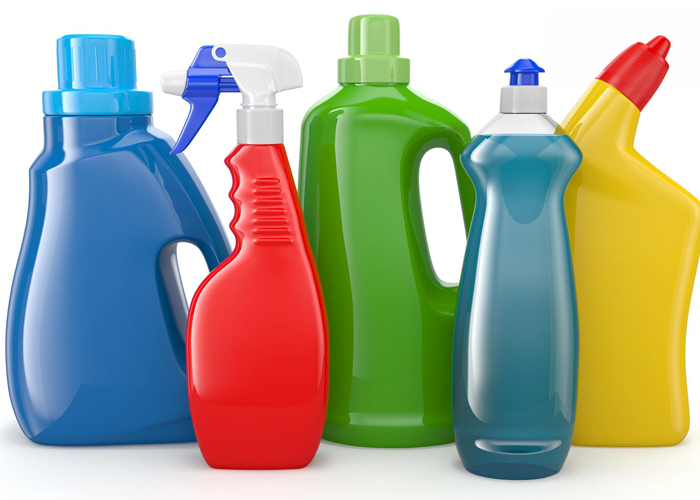
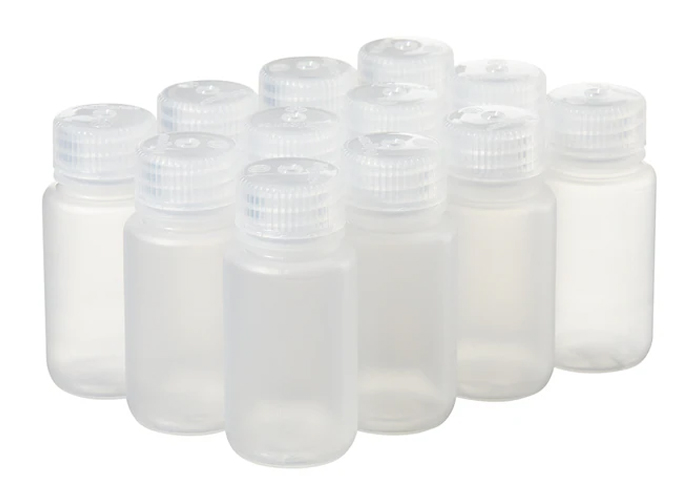
PPCO Random & PPHO – โพลีเมอร์ที่มีความชัดเจนปานกลาง ใช้ในการผลิตฝาปิดและฝาปิด นอกจากนี้ยังใช้ประดิษฐ์สิ่งของในครัวเรือน ถัง ของเล่น และภาชนะเก็บของอีกด้วย โพรพิลีนให้ความยืดหยุ่นโดยไม่มีข้อจำกัดด้านสีหรือเอฟเฟกต์พิเศษ โคโพลีเมอร์แบบสุ่มมีความชัดเจนมากกว่าเมื่อเทียบกับโฮโมโพลีเมอร์ และเหมาะกว่าสำหรับการสร้างเฉดสีโปร่งแสง
PPCO Block – คล้ายกับ PPCO แต่ได้รับการปรับปรุงเพื่อเพิ่มความต้านทานแรงกระแทก สารเติมแต่งทำให้โพลีเมอร์มีสีขาว ส่งผลให้มีความทึบสูง ลักษณะนี้อาจจำกัดความโปร่งใสที่ทำได้
โพลีเอทิลีนเทเรฟทาเลต (PET) – วัสดุโพลีเอสเตอร์มีความแข็งแรงเชิงกลที่แข็งแกร่ง พร้อมด้วยความทนทานต่อสารเคมีและคุณสมบัติกั้นที่ดีเยี่ยม PET มักถูกเลือกใช้สำหรับการผลิตภาชนะบรรจุเครื่องดื่มอัดลม นอกจากนี้ โพลีเอสเตอร์ยังสามารถนำมาปั่นและนำไปใช้ในการผลิตสิ่งทอสำหรับเสื้อผ้าได้ PET มีความโปร่งใสสูง ทำให้เป็นตัวเลือกที่ยอดเยี่ยมสำหรับบรรจุภัณฑ์โปร่งแสง แม้ว่า "สีเหลือง" เพียงเล็กน้อยอาจส่งผลต่อสีอ่อนมากก็ตาม
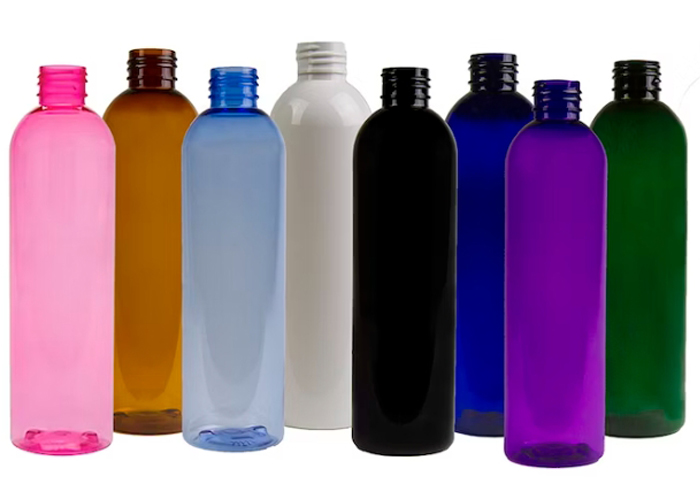
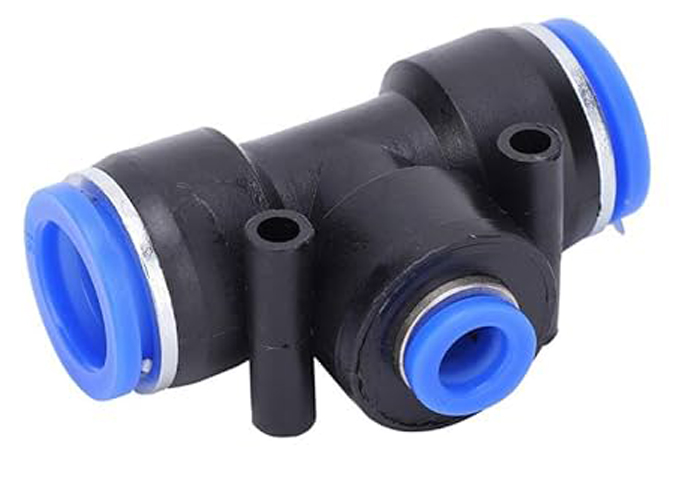
โพลีบิวทิลีนเทเรฟทาเลต – โพลีเมอร์วิศวกรรมเทอร์โมพลาสติกแบบผลึกมักใช้เป็นวัสดุฉนวนภายในภาคส่วนอิเล็กทรอนิกส์ สารนี้จัดอยู่ในประเภทโพลีเอสเตอร์ ซึ่งแสดงให้เห็นถึงความสมดุลอันน่าทึ่งของคุณลักษณะและคุณภาพในกระบวนการผลิต
โพลีสไตรีนสำหรับใช้งานทั่วไป – มีลักษณะใสเหมือนแก้ว แต่มีความทนทานต่อแรงกระแทกน้อยที่สุด วัสดุนี้พบการใช้งานหลักในกล่องซีดี ความชัดเจนที่โดดเด่นทำให้เหมาะสำหรับการสร้างเฉดสีโปร่งแสง แม้ว่าอาจมองเห็นสีม่วงเป็นครั้งคราวก็ตาม
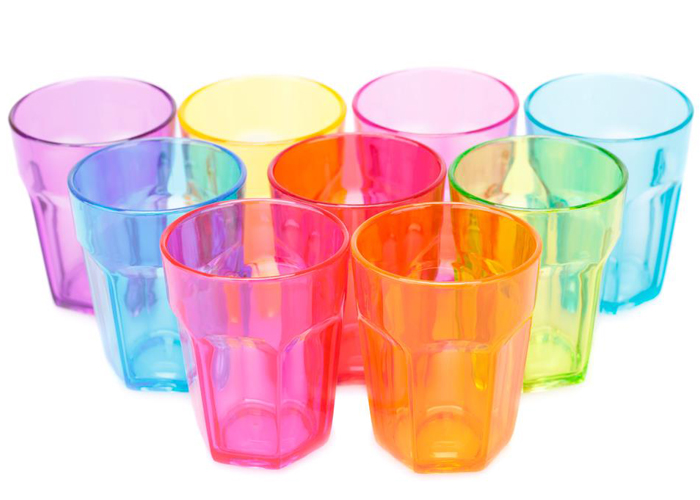
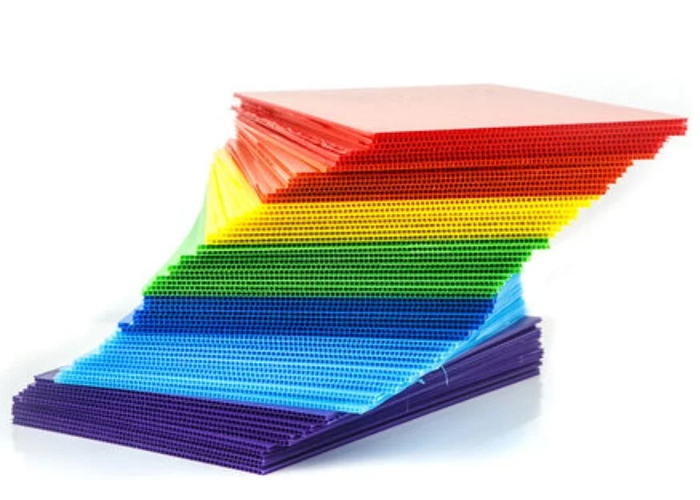
โพลีสไตรีนแรงกระแทกสูง - มาจาก GPPS โดยการผสมผสานสารเพิ่มแรงกระแทกเพื่อเพิ่มความต้านทานต่อแรงกระแทก ส่วนประกอบที่เพิ่มเข้ามานี้ส่งผลให้โพลีเมอร์กลายเป็นสีขาว และสูตรต่างๆ ก็มีระดับความทึบที่แตกต่างกันไป โดยทั่วไปจะใช้ในการผลิตชิ้นส่วนเกม ของเล่น และสิ่งของที่คล้ายกัน ความขาวที่เด่นชัดของมันสามารถก่อให้เกิดความท้าทายเมื่อมุ่งเป้าไปที่สีโปร่งแสง ทางเลือกพิเศษ เช่น K-Resin และ Styrolux สามารถเข้าถึงได้ในตลาดเพื่อให้มีความโปร่งแสงในระดับเดียวกับ GPPS
อะคริโลไนไตรล์ บิวทาไดอีน สไตรีน (ABS) – การทำซ้ำที่มีประสิทธิภาพยิ่งขึ้นของโพลีสไตรีนแรงกระแทกสูง (HIPS) ที่ใช้ในส่วนประกอบที่มีมูลค่าสูง ABS มีความทนทานมากกว่าเมื่อเทียบกับส่วนประกอบที่ผลิตโดย HIPS แม้ว่าจะต้องเผชิญกับความท้าทายที่คล้ายกันเมื่อพยายามเพื่อให้ได้สีที่โปร่งแสงก็ตาม เช่นเดียวกับ HIPS ABS นำเสนอรูปแบบโปร่งแสงพิเศษ เนื่องจากความทนทาน ABS จึงมักใช้ในการทำเคสสำหรับเครื่องมือไฟฟ้า
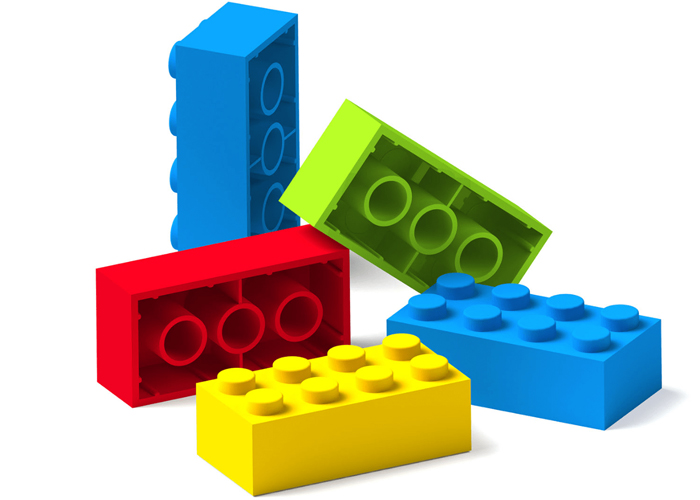
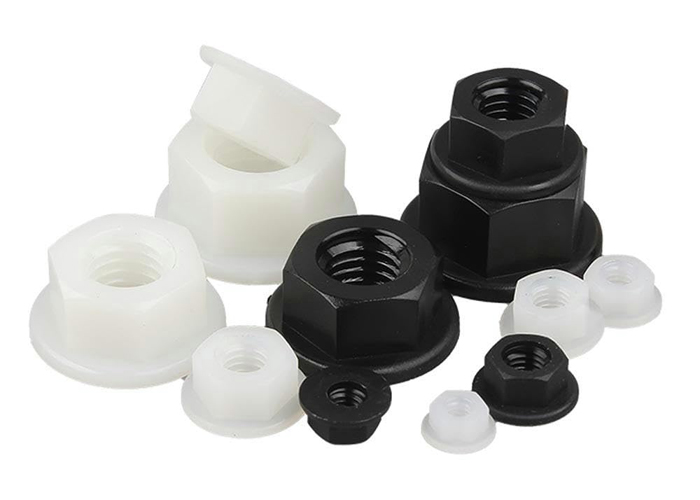
โพลีเอไมด์ (6, 66) – ไนลอนเป็นเกรดอเนกประสงค์ที่ใช้กันอย่างแพร่หลายในการก่อสร้างและบำรุงรักษาเครื่องจักรกล ความนิยมนี้เกิดจากการผสมผสานความแข็งแรงเชิงกล ความแข็งแกร่ง ลักษณะการหน่วงทางกล และความสามารถในการเป็นฉนวนไฟฟ้าที่มีประสิทธิภาพ ดังนั้นไนลอนจึงเป็นวัสดุที่ต้องการสำหรับการผลิตตู้ไฟฟ้า PA66 ทำหน้าที่เป็นทางเลือกทั่วไปแทนโลหะในการใช้งานที่หลากหลาย โดยมีคุณสมบัติทางเคมีและกายภาพคล้ายคลึงกับ PA6 อย่างใกล้ชิด PA6 มีความต้านทานแรงกระแทกและความต้านทานต่อตัวทำละลายได้ดีกว่า แม้ว่าจะมีความไวต่อการดูดซับความชื้นเพิ่มมากขึ้นก็ตาม
สไตรีนอะคริโลไนไตรล์โคโพลีเมอร์ – มีความโปร่งใสและทนทานต่อสารเคมีและความร้อนได้ดีเยี่ยม SAN ยังมีความแข็งแกร่ง ความต้านทานแรงดึง และความต้านทานแรงดัดงอที่ดีอีกด้วย เนื่องจากมีความมันเงาสูง จึงมักเลือกใช้ SAN เพื่อวัตถุประสงค์ในการบรรจุภัณฑ์เครื่องสำอาง อย่างไรก็ตาม การได้สีโทนอ่อนด้วย SAN อาจเป็นเรื่องที่ท้าทาย เนื่องจากสีย้อมสีม่วงที่มีอยู่ในวัสดุ ซึ่งถูกนำมาใช้เพื่อเพิ่มรูปลักษณ์ที่มองเห็นได้ในระหว่างการผลิต
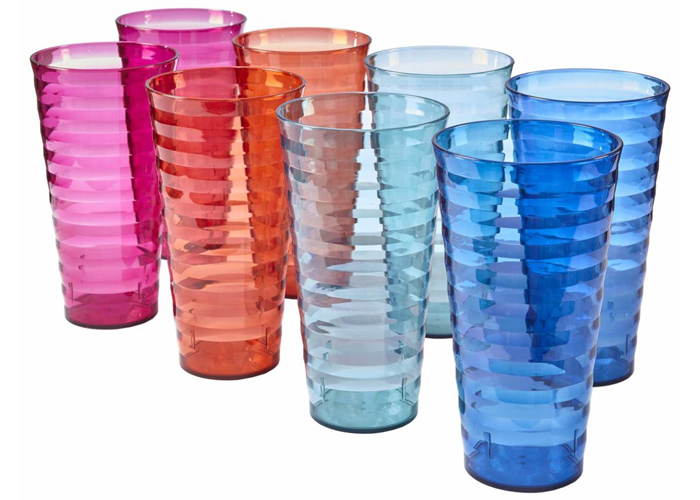
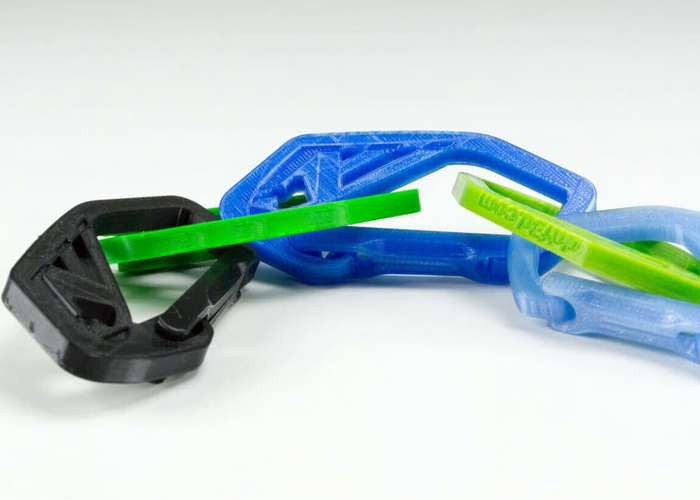
Polyethylene Terephthalate Glycol – PET ที่มีส่วนผสมของไกลคอล การเติมไกลคอลนี้ช่วยเพิ่มคุณสมบัติการไหลแต่ลดความแรงลง PETG สามารถอัดขึ้นรูปเพื่อสร้างขวดและสามารถขึ้นรูปเป็นแผ่นสำหรับผลิตบรรจุภัณฑ์แบบ 'พุพอง' ได้
เทอร์โมพลาสติกอีลาสโตเมอร์ (TPE) หรือเทอร์โมพลาสติกโพลียูรีเทน (TPU) – TPU พบการใช้งานที่หลากหลายในการใช้งาน เช่น แผงเครื่องมือในยานยนต์ ล้อเลื่อน เครื่องมือไฟฟ้า อุปกรณ์ทางการแพทย์ ตลอดจนการใช้งานฟิล์ม แผ่น และโปรไฟล์อัดขึ้นรูปต่างๆ TPE ถูกนำมาใช้ในการใช้งานที่หลากหลายในอุตสาหกรรมต่างๆ ซึ่งรวมถึงยานยนต์ การแพทย์ การก่อสร้าง ไฟฟ้า เครื่องใช้ไฟฟ้า บรรจุภัณฑ์ และภาคอุตสาหกรรม
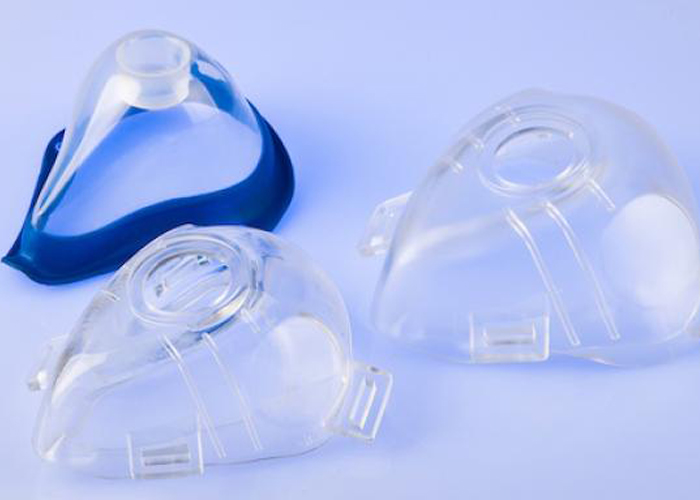
คำถามที่พบบ่อยเกี่ยวกับมาสเตอร์แบทช์ของเรา
©2023. ผู้ผลิตมาสเตอร์แบทช์สงวนลิขสิทธิ์
ทีมของเราจะส่งข้อเสนอที่ดีที่สุดใน 20 นาที